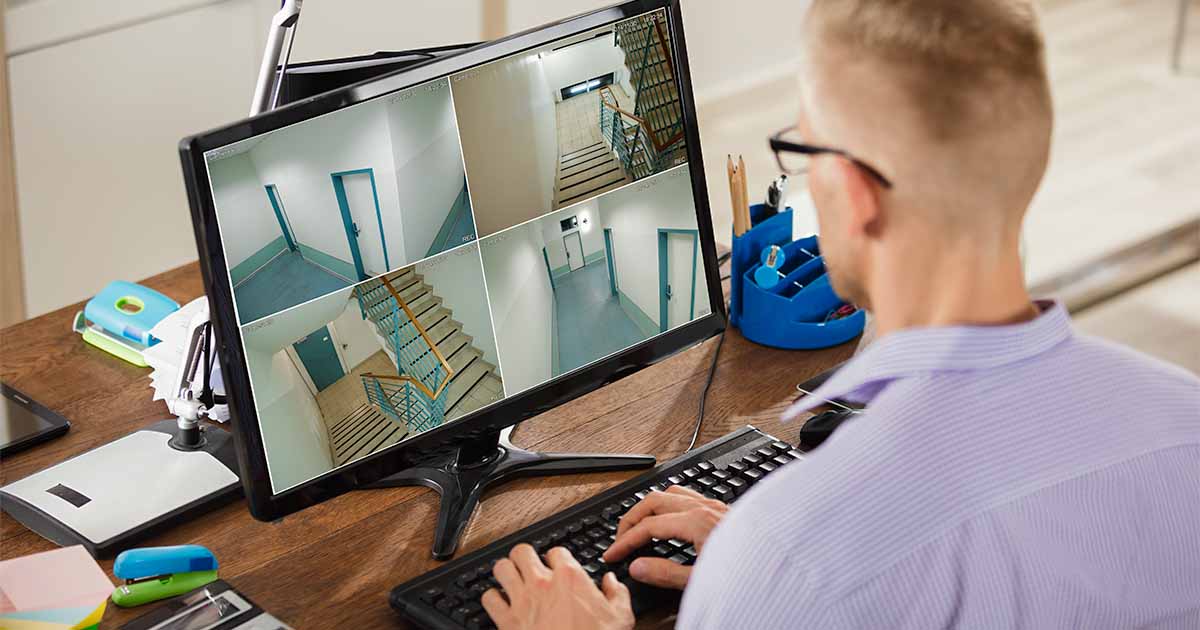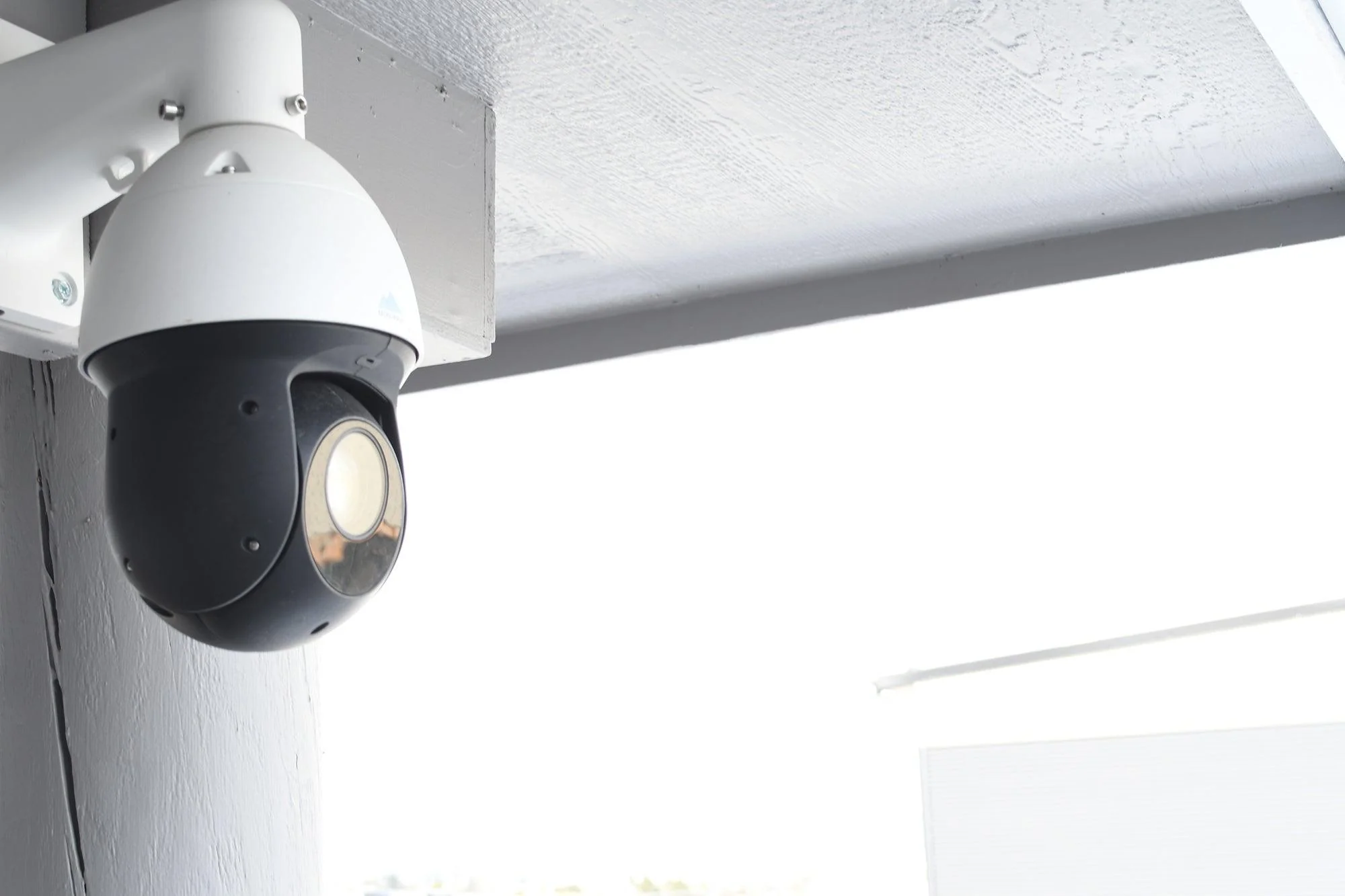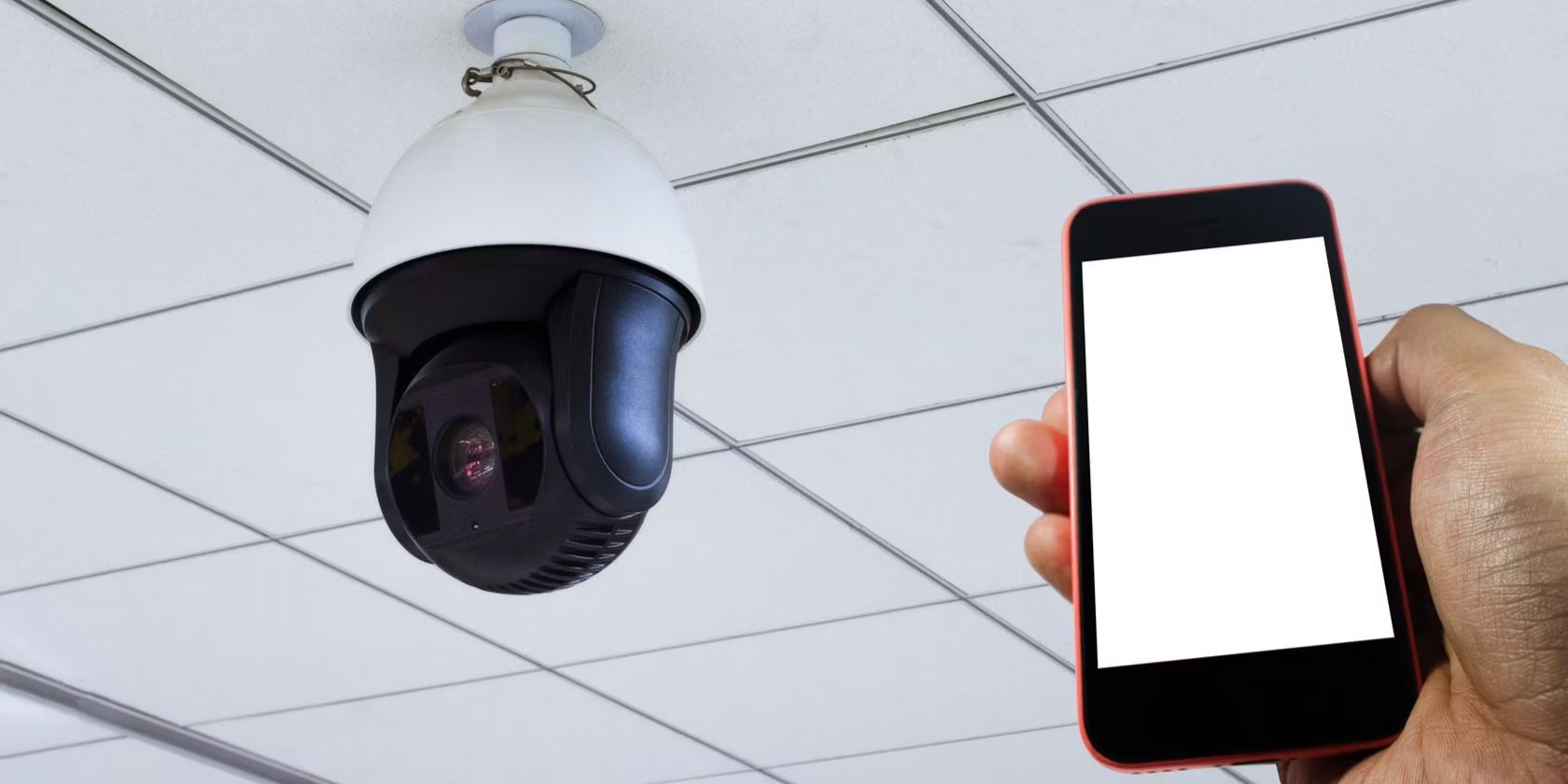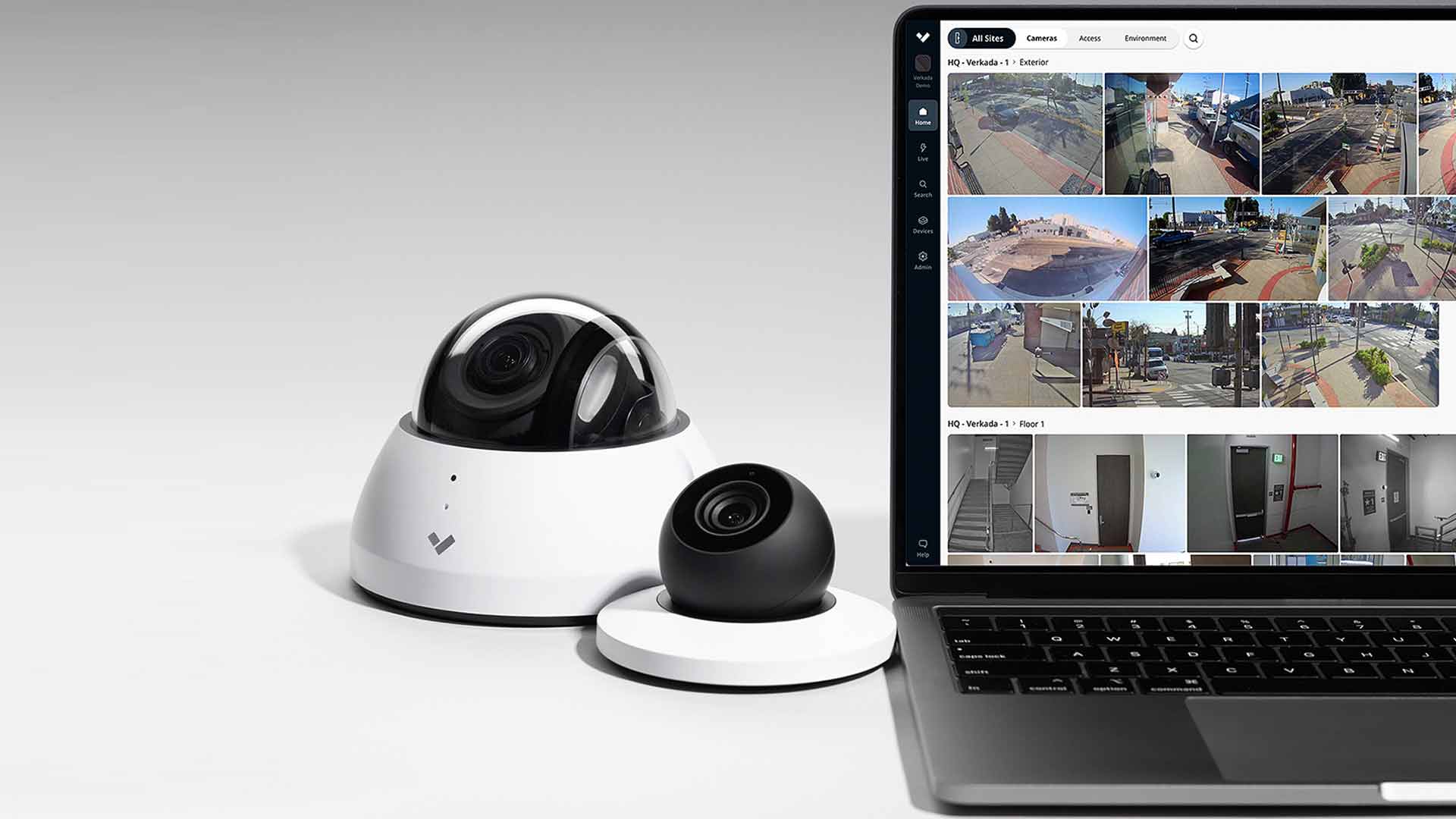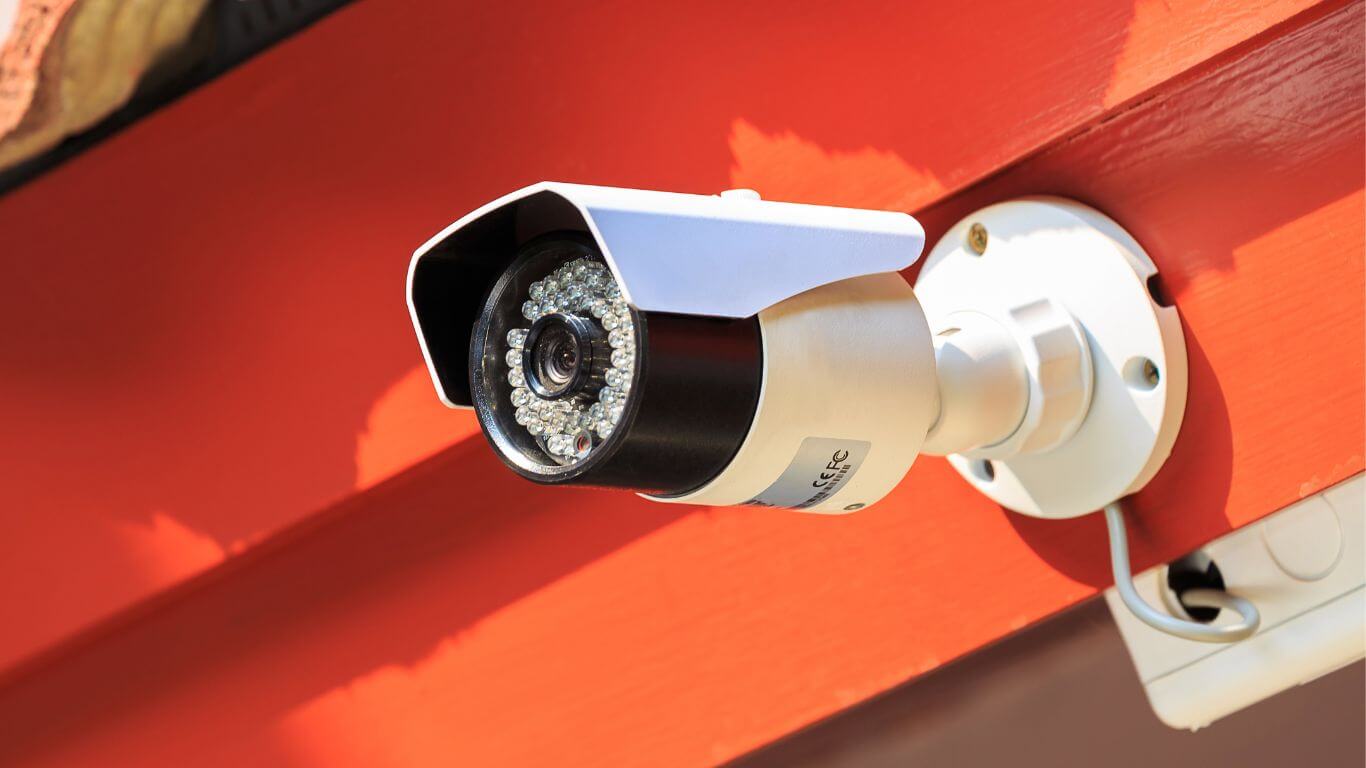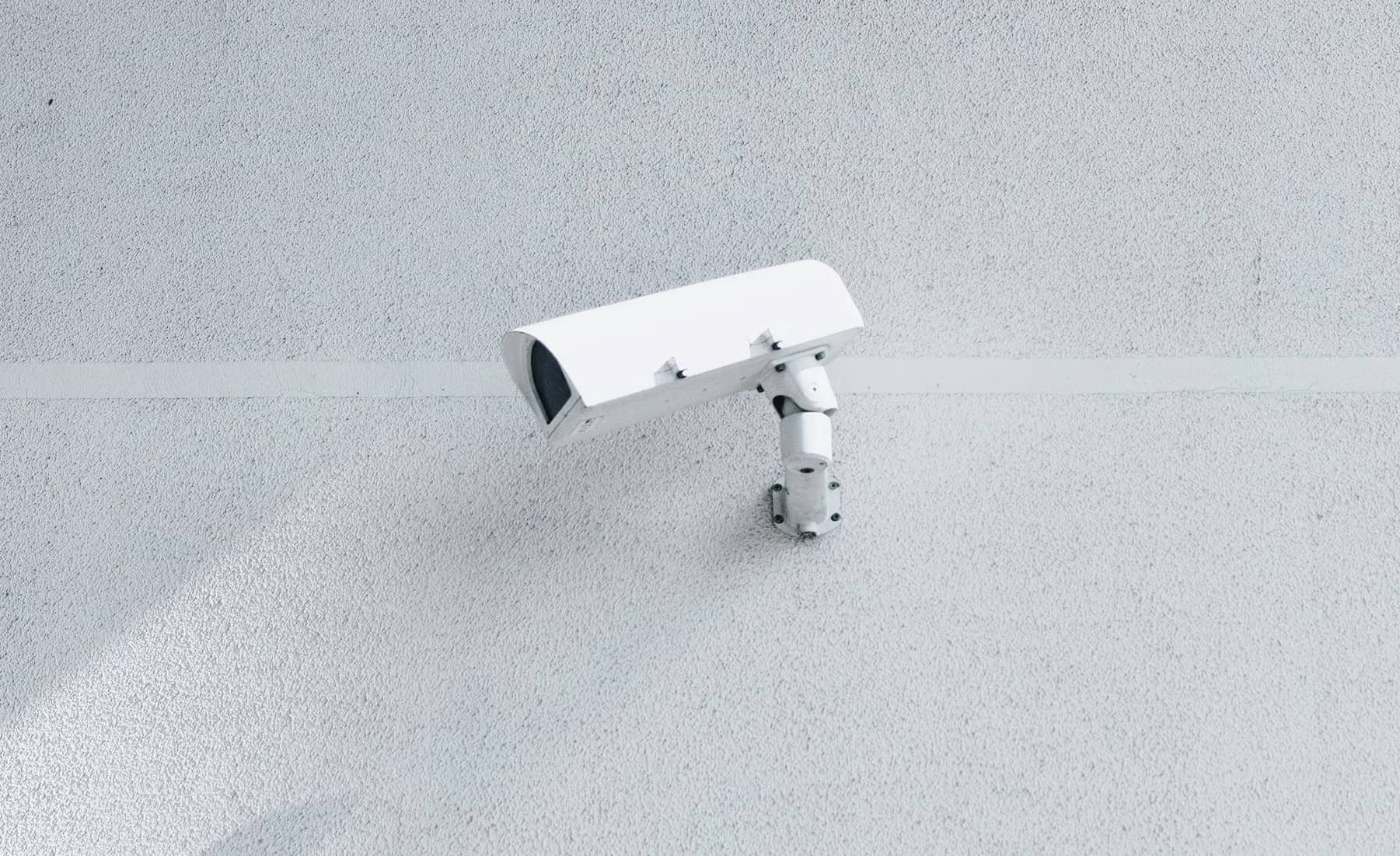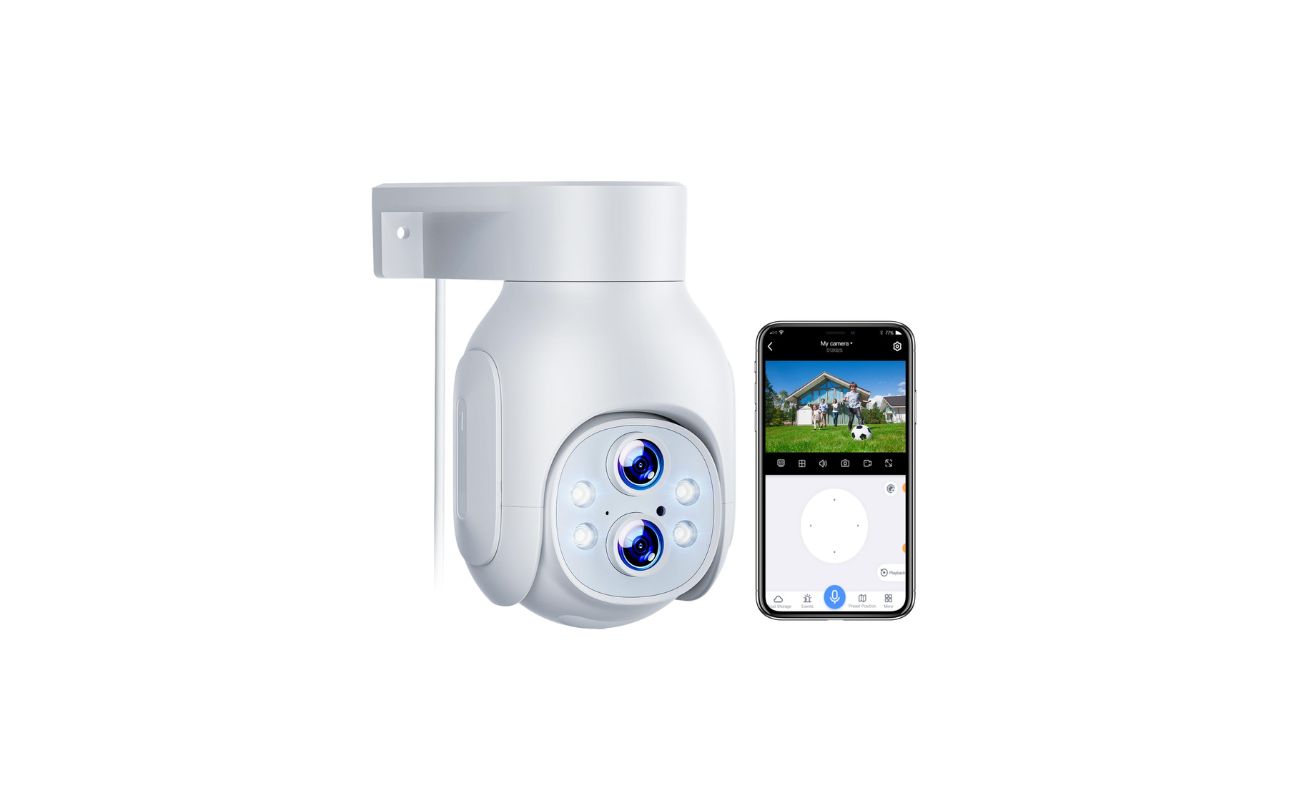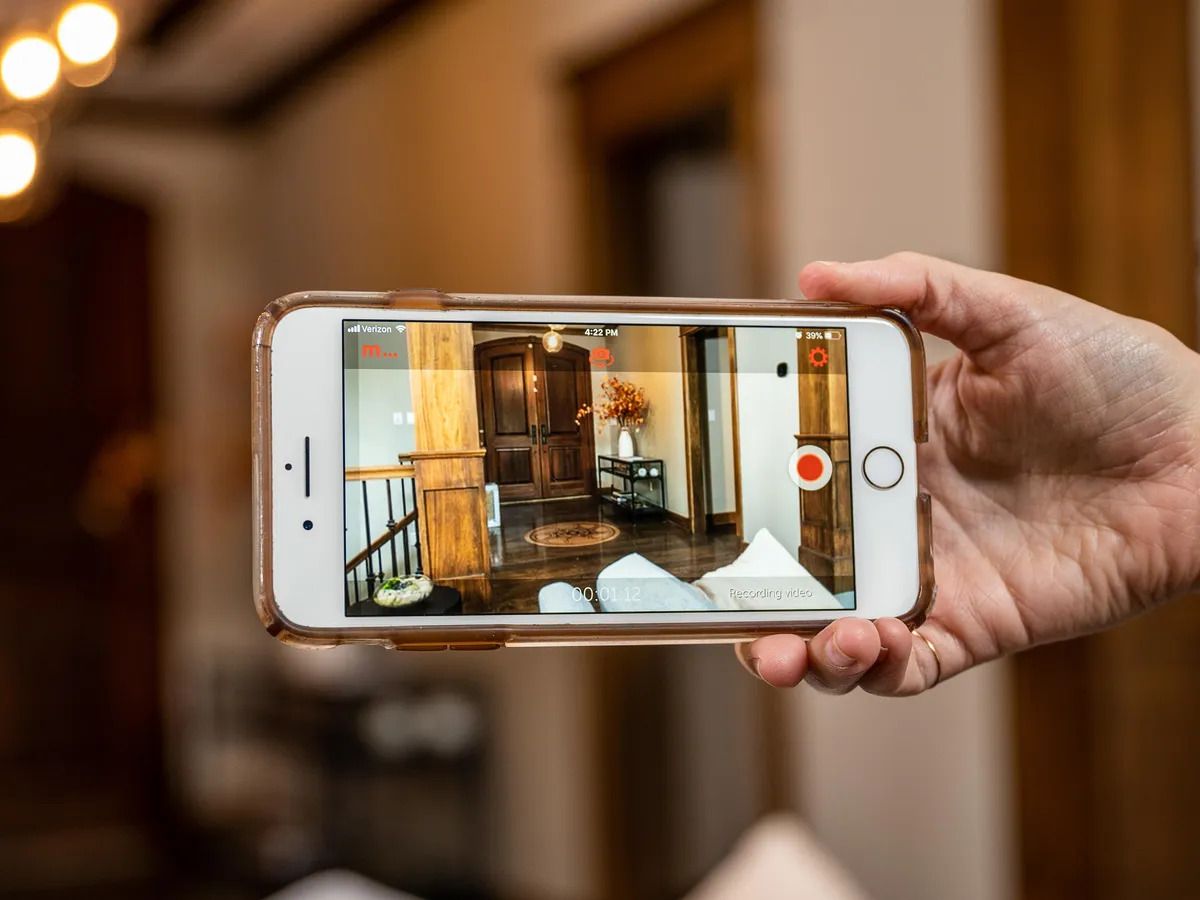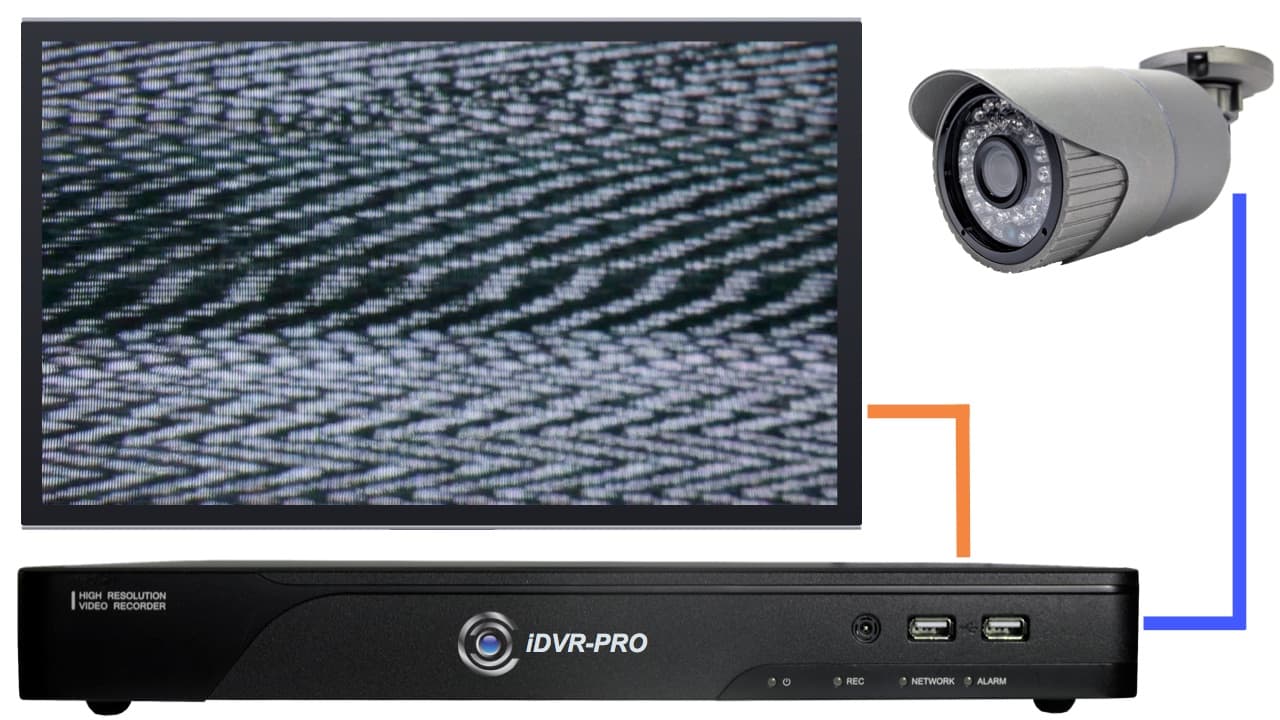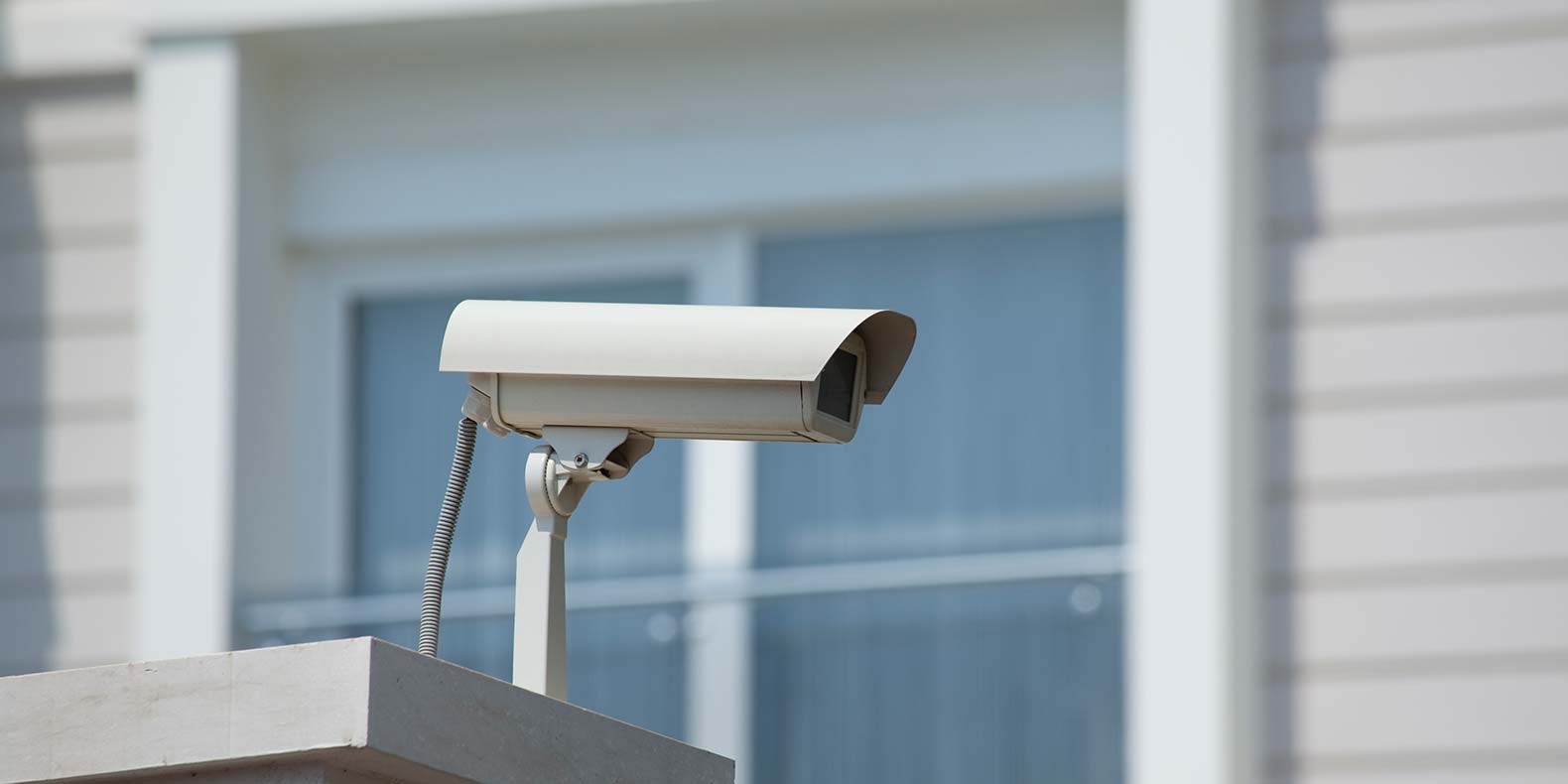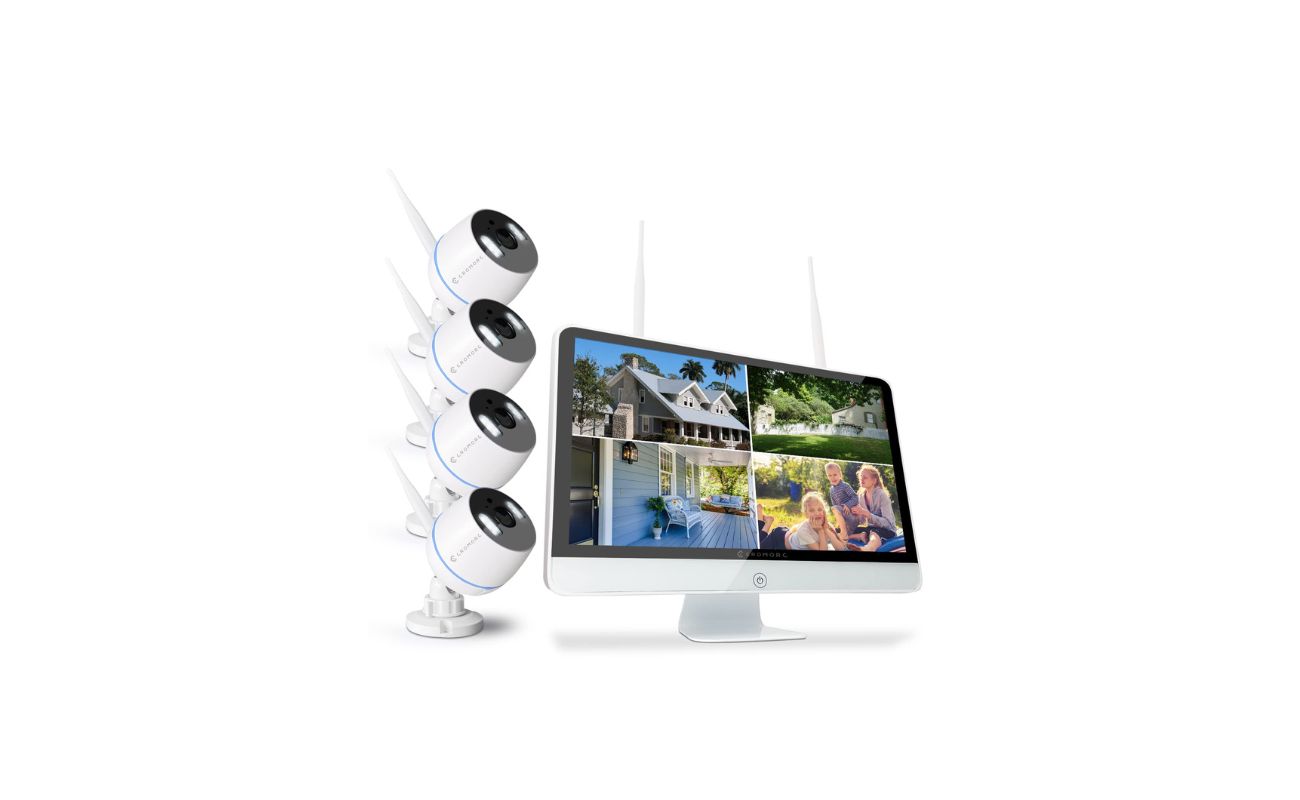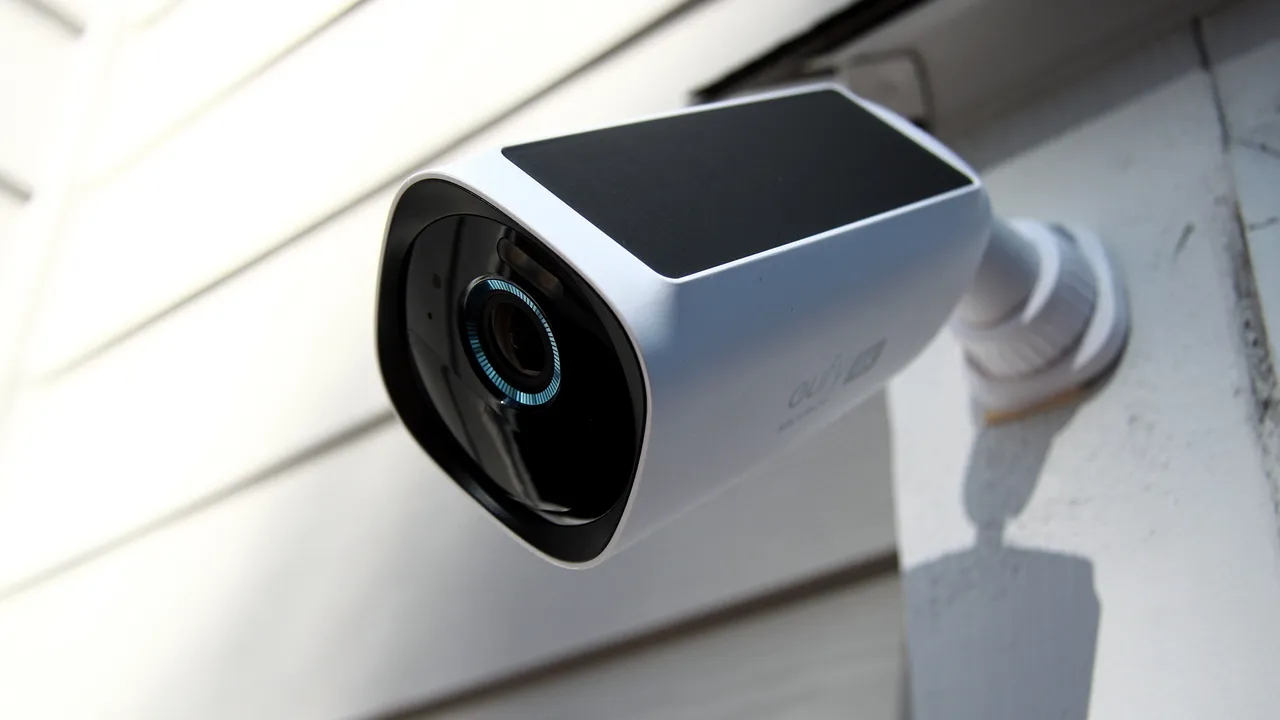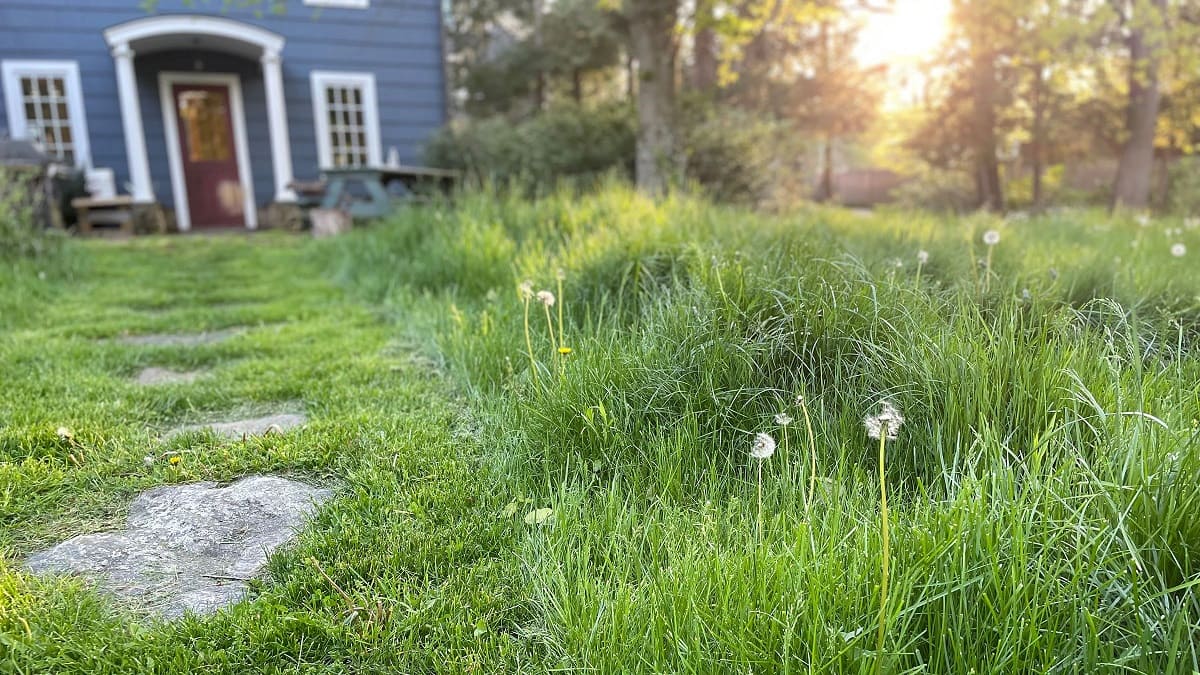Home>Home Security and Surveillance>How To Block My Neighbor’s Security Cameras
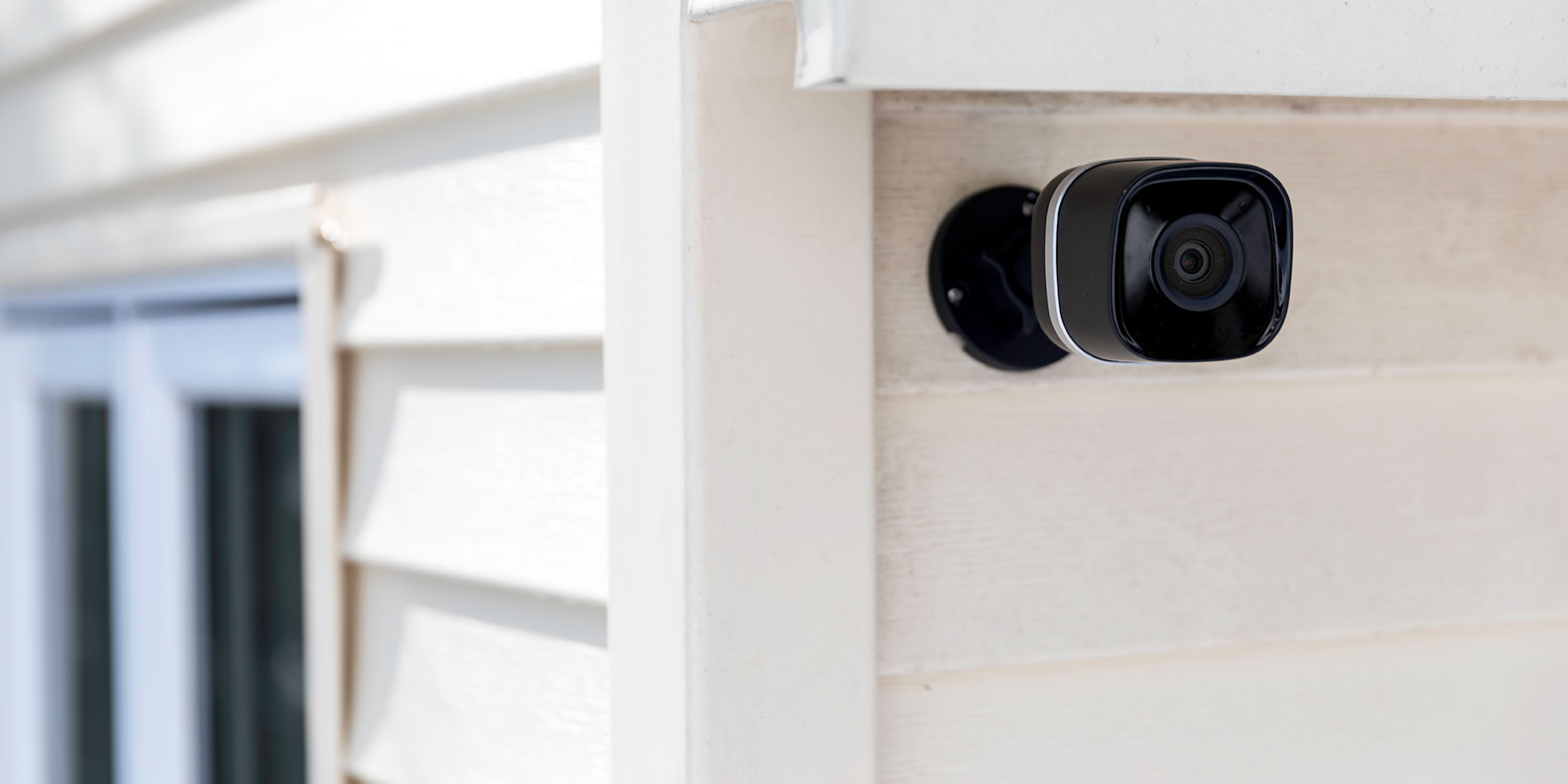

Home Security and Surveillance
How To Block My Neighbor’s Security Cameras
Modified: March 6, 2024
Learn how to protect your home security and surveillance by effectively blocking your neighbor's security cameras. Ensure your privacy today!
(Many of the links in this article redirect to a specific reviewed product. Your purchase of these products through affiliate links helps to generate commission for Storables.com, at no extra cost. Learn more)
Introduction
Home security is a top priority for many homeowners, as protecting one’s property and loved ones is essential. With the advancement of technology, security cameras have become a popular choice to enhance home security and surveillance.
However, there may be instances where you find yourself concerned about your neighbor’s security cameras and their impact on your own privacy. Whether it’s the constant feeling of being watched or concerns about potential intrusion, it’s understandable to want to explore options to block your neighbor’s security cameras.
Before delving into how to block your neighbor’s security cameras, it’s crucial to understand the legal implications of such actions. Privacy laws and regulations vary depending on your location, and it’s important to respect the rights of others while protecting your own. In this article, we will guide you through the steps to assess the need for blocking security cameras, communicate with your neighbor, and explore legal methods to address your concerns.
Assessing the Need for Blocking Security Cameras:
The first step in dealing with your concern is to assess the need for blocking your neighbor’s security cameras. Ask yourself why you feel the need to take action. If it’s solely for personal privacy reasons, consider alternative solutions that don’t involve blocking the cameras. However, if you genuinely believe your neighbor’s cameras are infringing on your privacy or causing distress, it may be appropriate to take further steps.
Communicating with Your Neighbor:
Open and honest communication is often the best approach to resolve conflicts between neighbors. Before considering any actions to block the security cameras, try having a conversation with your neighbor about your concerns. Be respectful and try to find a compromise that addresses both parties’ needs. Your neighbor may not be aware that their cameras are causing you discomfort, and they may be willing to make adjustments to alleviate your concerns.
Check Your Local Laws and Regulations:
Familiarize yourself with the local laws and regulations regarding security cameras in your area. Different jurisdictions may have specific rules regarding the placement and use of security cameras. Understanding these laws will help you navigate the situation better and make informed decisions.
Identifying the Range of the Security Cameras:
Observing the range and coverage of your neighbor’s security cameras can help you strategize ways to block them effectively. Carefully assess their field of view and determine the areas that are of most concern. This information will guide you in selecting appropriate methods to block or obstruct their cameras.
Strategically Positioning Obstacles:
One simple and non-invasive method to block a security camera is to strategically position obstacles between the camera’s lens and the area you wish to protect. This could include placing potted plants, decorative screens, or tall furniture to obstruct the camera’s view. Be aware not to violate any property laws or regulations while doing so.
Key Takeaways:
- Respect privacy laws and communicate openly with your neighbor before taking action to block security cameras. Understanding legal boundaries and assessing the need for blocking cameras is crucial for a harmonious resolution.
- Consider using privacy window films or curtains to increase privacy, and explore legal outdoor security measures to protect your home. Prioritize respectful communication and understanding of privacy laws for a peaceful resolution.
Understanding the Legal Implications
When it comes to dealing with your neighbor’s security cameras, understanding the legal implications is crucial for both protecting your rights and maintaining a respectful relationship with your neighbor. Privacy laws and regulations can vary widely depending on your location, so it’s essential to do your due diligence and ensure you are acting within the boundaries of the law.
1. Research Local Privacy Laws:
Start by researching the privacy laws specific to your region or country. Many jurisdictions have laws that govern the use of surveillance cameras and the protection of privacy. These laws typically address issues such as video surveillance in public spaces, use of surveillance on private property, and the capturing of audio along with visual recordings.
2. Consider the Consent Requirement:
One key aspect of privacy laws is the requirement for consent. In some areas, consent is required from individuals who might be captured by surveillance cameras. This means that your neighbor may need to obtain your consent if their cameras capture areas where you have a reasonable expectation of privacy, such as your backyard.
3. Check Local Homeowner’s Association (HOA) Rules:
If you live in a community governed by a homeowner’s association (HOA), check the rules and regulations regarding security cameras. Some HOAs may have specific guidelines on where cameras can be placed, their visibility, and any restrictions on capturing certain areas of neighboring properties.
4. Understand Trespassing Laws:
While addressing your concerns regarding privacy, it’s important to respect your neighbor’s property rights as well. Trespassing laws vary, but generally, you should avoid crossing onto your neighbor’s property without permission, as this can lead to legal consequences for you.
5. Consult with Legal Professionals:
If you are unsure about the legal implications or have specific concerns regarding your situation, it may be wise to consult with a legal professional. They can provide guidance based on your local laws and help you navigate the appropriate steps to address your concerns without violating any legal boundaries.
Remember, while it’s important to protect your privacy, it is equally important to handle these matters respectfully and within the confines of the law. Open communication, compromise, and a willingness to understand and respect each other’s rights can often lead to a resolution that benefits both parties involved.
Assessing the Need for Blocking Security Cameras
Before taking any steps to block your neighbor’s security cameras, it is essential to assess the need for doing so. Understanding the reasons behind your concerns can help you determine the best course of action. Here are some factors to consider when assessing the need for blocking security cameras:
1. Invasion of Privacy:
One of the primary reasons people feel the need to block their neighbor’s security cameras is the invasion of their privacy. If you feel that the cameras are constantly monitoring your activities, compromising your personal space, or capturing your private moments, it is understandable that you may want to take action.
2. Distress and Discomfort:
Constant surveillance can cause distress and discomfort. If the presence of your neighbor’s security cameras is affecting your peace of mind, emotional well-being, or daily activities, it may be necessary to address the situation to alleviate stress and improve your quality of life.
3. Impact on Property Value:
In some cases, the presence of visible security cameras in a neighborhood can impact property values. If you believe that the cameras are negatively affecting the perceived desirability and value of your property, you may consider taking action to maintain the integrity of your investment.
4. Potential Intrusion and Security Risks:
If you suspect that your neighbor’s security cameras have the potential to be used for malicious purposes, such as surveilling your property or monitoring your activities without legitimate reasons, it is important to address this concern. Protecting your safety and security should be a priority.
5. Respect for Your Privacy Rights:
While your neighbor has the right to secure their property, it is equally important that they respect your privacy rights. If you believe that their security cameras go beyond reasonable measures and infringe upon your privacy, it is necessary to address the situation and find a balance that respects both parties involved.
After assessing the need for blocking security cameras, it is crucial to consider alternative solutions, such as open communication with your neighbor to express your concerns. By engaging in a respectful conversation, you may be able to find a compromise or alternative measures that alleviate your concerns without completely blocking the cameras. However, if your concerns remain unaddressed or the need to block the security cameras persists, it is important to explore legal methods and potential solutions to protect your privacy and well-being within the confines of the law.
Communicating with Your Neighbor
When faced with concerns about your neighbor’s security cameras, open and honest communication is often the best approach to resolving the issue. Engaging in a conversation with your neighbor can help address your concerns and find a mutually agreeable solution. Here are some tips for effectively communicating your concerns:
1. Choose the Right Time and Place:
Select an appropriate time and place to have a conversation with your neighbor. It’s important to choose a calm and non-confrontational setting where you can discuss your concerns without distractions or interruptions. Approach the conversation with a positive attitude and a willingness to find a resolution.
2. Be Respectful and Courteous:
During the conversation, maintain a respectful and courteous tone. Avoid blaming or accusing your neighbor, as this can lead to defensiveness and escalate the situation. Instead, express your concerns in a calm and rational manner, emphasizing your desire to find a solution that respects both parties’ needs.
3. Explain Your Concerns:
Clearly and concisely explain why you are concerned about their security cameras. Describe how the cameras are impacting your privacy, daily activities, or emotional well-being. Use specific examples and provide tangible evidence, if available, to support your concerns. It’s important to focus on how their cameras are affecting you rather than attacking their actions or intentions.
4. Listen to Their Perspective:
Allow your neighbor to express their perspective on the situation. Listen attentively and try to understand their reasons for installing the security cameras. It’s possible that they may not be aware of the impact their cameras are having on you. By actively listening, you can gain insight into their point of view and work towards a resolution.
5. Seek a Mutually Agreeable Solution:
Work together to find a solution that addresses both your concerns and your neighbor’s need for security. Consider alternative measures such as adjusting camera angles, installing privacy shields, or setting specific camera recording schedules. Finding common ground and compromise is key to resolving the issue amicably.
6. Document the Conversation:
After the conversation, it can be helpful to document the key points discussed and any agreements reached. This documentation will serve as a reference in case further action is required or if any misunderstandings arise in the future.
Remember, effective communication is essential in resolving conflicts with your neighbor. By approaching the conversation with respect and a genuine desire to find a solution, you increase the likelihood of reaching a resolution that respects both your rights and your neighbor’s security needs.
Check Your Local Laws and Regulations
When dealing with concerns about your neighbor’s security cameras, it’s crucial to familiarize yourself with the local laws and regulations regarding surveillance and privacy. Each jurisdiction may have different guidelines in place to protect individuals’ rights to privacy. Here are some steps to ensure you are well-informed about the legal framework surrounding security cameras in your area:
1. Research Privacy Laws:
Start by researching the privacy laws specific to your region or country. Look for legislation or regulations that specifically address the use of surveillance cameras by private individuals or homeowners. Understand the rights and limitations outlined in these laws to make informed decisions about your actions.
2. Contact Local Authorities:
If you have specific questions or concerns about privacy and surveillance laws, it can be helpful to contact local authorities. This may include city or town officials, local law enforcement agencies, or zoning and planning departments. They can provide you with information or point you in the right direction for further resources.
3. Consult Homeowner’s Association (HOA) Guidelines:
If your neighborhood is governed by a homeowner’s association (HOA), review the guidelines and bylaws related to security cameras. HOAs often have their own specific rules and regulations regarding the placement, visibility, and usage of security cameras by homeowners. Understand what restrictions or permissions may be in place for your community.
4. Determine Consent Requirements:
Some jurisdictions require homeowners to obtain consent from individuals who may be captured on their surveillance cameras. Research whether your area has specific consent requirements for recording video or audio in public or private spaces. This information can help inform your actions and provide a basis for discussion with your neighbor.
5. Consider Privacy Expectations:
Think about the areas where you have a reasonable expectation of privacy, such as your backyard or windows facing your property. Research if there are any guidelines or legal protections in place specifically related to protecting privacy in these areas. Understanding these expectations can inform your conversations and actions regarding your neighbor’s security cameras.
6. Seek Legal Advice if Needed:
If you have specific concerns or believe your neighbor’s cameras are violating your privacy rights, it may be wise to consult with a legal professional familiar with local privacy laws. They can provide guidance based on your particular circumstances and help you understand your legal rights and options for addressing the situation.
Remember, staying informed about the legal landscape will guide your approach to dealing with your neighbor’s security cameras. Respecting privacy laws and regulations is crucial in finding a resolution that protects your rights while maintaining a positive relationship with your neighbor.
Read more: How To Find A Neighbor’s Outdoor Cameras
Identifying the Range of the Security Cameras
Before taking any steps to address your concerns about your neighbor’s security cameras, it is important to assess the range and coverage of the cameras. Understanding their field of view will help you strategize and choose the most effective methods to block or mitigate their impact. Here are some steps to help you identify the range of the security cameras:
1. Observe and Map the Cameras:
Take the time to carefully observe and map out the locations of your neighbor’s security cameras. Note the specific areas they cover, such as entry points, windows, or shared spaces. Create a diagram or map that clearly indicates the positions of the cameras to get a visual representation of their coverage.
2. Determine the Field of View:
Next, identify the field of view of each camera. This refers to the area that the camera can capture and monitor. Consider elements such as the camera’s angle of view, zoom capabilities, and any tilt or pan features that might expand its range. Understanding the scope of their surveillance will help you assess the areas that may be affected.
3. Test for Blind Spots:
While mapping the cameras, check for potential blind spots where the camera’s coverage may be limited or obstructed. These blind spots could provide areas where your privacy could be better protected without the need for blocking the cameras directly. Strategically positioning obstacles or adjusting your own landscaping might be an effective solution in these areas.
4. Consider Night Vision and Infrared Capabilities:
Take into account any night vision or infrared capabilities of the cameras. Some security cameras have the ability to record and monitor in low-light or complete darkness. Understand how these features might impact their surveillance range, especially during nighttime hours when privacy concerns may be greater.
5. Research the Camera Specifications:
Look into the specific model and specifications of the security cameras your neighbor is using. Manufactures often provide detailed information about the camera’s range and field of view. Understanding these specifications will help you better assess the potential impact on your privacy and choose appropriate measures to address your concerns.
6. Consult with Professionals if Needed:
If you require expert assistance in evaluating the range and coverage of the security cameras, consider consulting with professionals in the field of security or surveillance. They can provide insights and advice based on their expertise, helping you make informed decisions about potential solutions.
By identifying the range of your neighbor’s security cameras, you gain valuable information to guide your efforts to address your concerns. This knowledge will enable you to select the most effective methods and techniques to protect your privacy while maintaining a respectful relationship with your neighbor.
Consider discussing your concerns with your neighbor first. If that doesn’t work, ensure your own property is secure and consider installing your own security measures. Blocking their cameras could lead to legal issues.
Strategically Positioning Obstacles
One effective and non-invasive method to address your concerns about your neighbor’s security cameras is by strategically positioning obstacles to block or obstruct their view. By strategically placing objects in the line of sight of the cameras, you can minimize their intrusive impact on your privacy. Here are some key points to consider when strategically positioning obstacles:
1. Assess Camera Placement:
Take note of the specific locations of the security cameras and the areas they are monitoring. This will help you determine the best spots to position obstacles. Understand the camera’s field of view and identify the angles and distances from which they capture your property.
2. Utilize Natural Elements:
Consider utilizing existing natural elements on your property, such as trees, shrubs, or hedges, to strategically obstruct the view of the cameras. Planting tall vegetation or installing dense foliage can help create a natural barrier that blocks the line of sight and preserves your privacy.
3. Integrate Decorative Features:
Another way to strategically position obstacles is by incorporating decorative features that serve a dual purpose. For example, large decorative pots, statues, or outdoor furniture can be strategically placed in areas that obstruct the camera’s view while adding aesthetic value to your property.
4. Use Privacy Screens or Panels:
Privacy screens or panels are specifically designed to create barriers and shield certain areas from view. These screens can be installed strategically to block the cameras’ line of sight. There are various options available in the market, including outdoor privacy screens, lattice panels, or bamboo fencing.
5. Adjust Lighting Conditions:
Manipulating the lighting conditions around your property can also help obstruct the visibility of the security cameras. By strategically using lighting fixtures, such as floodlights, motion-activated lights, or strategically positioned lamps, you can create bright spots that make it difficult for the cameras to capture clear images or footage.
6. Consider Legal Boundaries:
When positioning obstacles, ensure that you stay within legal boundaries and respect property lines. Avoid obstructing public areas or encroaching on your neighbor’s property without their consent. It’s important to find a balance between protecting your privacy and respecting the rights of your neighbor.
Remember, the goal is to strategically position obstacles that obstruct the cameras’ view while maintaining a respectful and aesthetically pleasing environment. By carefully considering the camera placement, utilizing natural and decorative elements, and adhering to legal boundaries, you can create effective barriers that protect your privacy without causing unnecessary conflicts with your neighbor.
Using Privacy Window Films or Curtains
If you’re looking for a simple and effective way to increase privacy and block your neighbor’s security cameras, using privacy window films or curtains can be a viable option. These solutions offer a cost-effective and easily reversible way to obscure the view into your home. Here’s what you need to know:
1. Privacy Window Films:
Privacy window films are adhesive films that can be applied directly to your windows to obstruct the view from the outside while still allowing natural light to enter your home. They come in a variety of designs, patterns, and opacities, offering different levels of privacy and aesthetics. Choose a film that best suits your needs and complements your home’s decor.
2. Easy Installation:
Applying privacy window films is a straightforward process that can typically be done as a do-it-yourself project. The films are easily cut to size and can be installed using a few basic tools and some soapy water. Follow the manufacturer’s instructions for proper installation and ensure that the window surface is clean and free from any debris before applying the film.
3. Enhanced Privacy:
Privacy window films provide increased privacy by obstructing the direct view into your home. They create a frosted or textured appearance on the window surface, making it difficult for anyone to see inside. These films are particularly effective during daylight hours when the outside is brighter than the inside of your home.
4. Versatile Options:
Privacy window films are highly versatile and can be used on various types of windows, such as bathroom windows, front entry doors with glass panels, or even glass partitions inside your house. You can choose a film that offers full blockage or opt for a semi-opaque design that allows some light to pass through while still maintaining privacy.
5. Privacy Curtains:
If you prefer a more traditional approach, privacy curtains are another option to consider. These curtains are specifically designed to provide privacy and block the view from the outside. They come in different styles, colors, and opacity levels, allowing you to choose the level of privacy you desire while complementing your interior decor.
6. Combination Approach:
In situations where you want to maximize privacy, you can use a combination of privacy window films and curtains. Applying a privacy film on the windows and using curtains or blinds can provide an added layer of privacy and further block the view into your home when needed.
Privacy window films and curtains offer a practical solution for increasing privacy and blocking your neighbor’s security cameras. By choosing and installing the right option for your specific needs, you can create a more secluded environment and have added peace of mind within the comfort of your own home.
Exploring Infrared Light as a Disruption Method
When it comes to addressing concerns about your neighbor’s security cameras, one method you can consider is using infrared light as a disruption technique. Infrared light has the potential to interfere with the functionality of some surveillance cameras, rendering them less effective. Here’s what you need to know about this approach:
1. How Infrared Light Works:
Infrared light operates outside the visible spectrum of light that the human eye can perceive. While humans can’t see it, many security cameras are designed to capture and record infrared light. By emitting a strong source of infrared light, you may be able to overwhelm or distort the camera’s image capture capabilities.
2. Infrared LED Lights:
To disrupt your neighbor’s security cameras using infrared light, you can utilize infrared LED lights. These lights emit a powerful beam of infrared light that can affect the camera’s ability to capture clear footage. They are typically available in a range of sizes and can be easily purchased online or from specialized retailers.
3. Identifying Compatible Cameras:
Bear in mind that not all security cameras are susceptible to disruption by infrared light. Some cameras come equipped with infrared filters or specialized lenses that can minimize the impact of external infrared light sources. It’s important to research and identify the specific type of cameras your neighbor is using to assess the compatibility with this disruption method.
4. Placement of Infrared Lights:
To maximize the effectiveness of using infrared light as a disruption method, you will need to strategically position the infrared LED lights. Determine the locations and angles at which the security cameras are monitoring your property, and aim the lights in those directions. It’s important to note that interfering with someone else’s security cameras may have legal implications, so consulting with a legal professional is advisable before implementing this method.
5. Limitations and Considerations:
While exploring infrared light as a disruption method, it’s crucial to consider the limitations and ethical implications. Interfering with your neighbor’s security cameras without their consent may lead to strained relationships and potential legal consequences. Therefore, it’s important to respect privacy and property rights while considering this approach. Open communication and problem-solving with your neighbor should always be the first step in resolving privacy concerns.
6. Use Infrared Light as a Deterrent:
Infrared light can also be used as a deterrent, even if it doesn’t disrupt your neighbor’s security cameras completely. By installing visible infrared LED lights around your property, you may discourage potential intruders or those with malicious intentions from approaching your home. The presence of these lights can create a perception of increased surveillance and security.
Remember, while exploring infrared light as a disruption method, it is important to act within the confines of the law and respect the rights of others. Engaging in open communication with your neighbor and seeking legal advice will help you navigate the situation effectively and find appropriate solutions to address your privacy concerns.
Installing Outdoor Security Measures
When dealing with concerns about your neighbor’s security cameras, one proactive approach you can take is to install outdoor security measures on your property. These measures can help enhance the security of your home and provide you with peace of mind. Here are some effective outdoor security measures to consider:
1. Security Cameras:
Installing security cameras on your property can help monitor and record any suspicious activities. Position the cameras strategically to cover areas of interest and potential entry points. Make sure the cameras you choose have features such as night vision, high resolution, and remote access for monitoring from your smartphone or computer.
2. Motion-Activated Lights:
Motion-activated lights serve as an effective deterrent and can help illuminate any potential intruders. When the sensors detect movement, the lights will automatically turn on, alerting you and potentially scaring off any unauthorized individuals in the vicinity. Install these lights around the perimeter of your property and near entry points.
3. Security Fencing:
A sturdy and well-maintained security fence can help protect your property and prevent unauthorized access. Choose a fence that is difficult to climb, such as one with vertical bars or a solid design. Consider adding features like anti-climb spikes or a lockable gate to enhance security further.
4. Outdoor Alarms or Sensors:
Outdoor alarms or sensors can be installed on doors, windows, or other vulnerable areas of your home’s exterior. When triggered by unauthorized entry or tampering, these devices emit a loud alarm, alerting you and potentially deterring intruders.
5. Security Signage:
Place highly visible signs around your property indicating that you have a security system or surveillance in place. These signs can act as a deterrent for potential intruders and communicate that your home is well-protected.
6. Landscaping and Lighting:
Maintaining your landscaping can also contribute to the overall security of your property. Trim trees and shrubs near windows and doors to eliminate potential hiding spots for intruders. Additionally, ensure that your outdoor areas are well-lit, particularly near entry points, to reduce the likelihood of someone attempting unauthorized access under the cover of darkness.
7. Neighborhood Watch or Security Group:
Consider forming or joining a neighborhood watch or security group. Working together with your neighbors can create a strong sense of community and security. This collaborative effort can help deter criminal activity and provide support in addressing security concerns.
Remember, while installing outdoor security measures on your property can help enhance your home’s security, it’s important to act within the confines of the law and respect the rights of others. Open and respectful communication with your neighbor is always recommended as the first step in addressing any concerns about their security cameras.
By taking proactive steps to secure your home and implement outdoor security measures, you can create an environment that not only deters potential intruders but also provides you and your family with a greater sense of safety and peace of mind.
Conclusion
Concerns about your neighbor’s security cameras and their impact on your privacy can be unsettling. However, there are several proactive steps you can take to address these concerns while maintaining a respectful relationship with your neighbor.
First and foremost, it is crucial to understand the legal implications surrounding security cameras in your area. Research local privacy laws and regulations and ensure that you are acting within the boundaries of the law to protect your rights while respecting the rights of others.
Assessing the need for blocking security cameras is an essential step in determining the appropriate course of action. Consider factors such as invasion of privacy, distress and discomfort, potential security risks, and the impact on property value. Open and respectful communication with your neighbor can also be effective in reaching a compromise or finding alternative solutions.
Checking local laws and regulations pertaining to surveillance cameras will help you understand the specific rules for your area. Be aware of consent requirements, proximity limitations, and any guidelines set forth by homeowner’s associations if applicable.
Identifying the range and coverage of your neighbor’s security cameras is crucial for implementing effective solutions. Understanding their field of view and strategic positioning can help you determine the best methods to block or obstruct their cameras without violating any laws or regulations.
Consider using privacy window films or curtains to increase privacy within your home. These options provide a cost-effective and easily reversible way to obscure the view from outside while allowing natural light to enter.
Exploring infrared light as a disruption method can also be an option, although it’s important to proceed cautiously and within the confines of the law. Infrared light has the potential to interfere with certain security cameras, but respectful communication and legal advice should always be prioritized.
Finally, installing outdoor security measures can help enhance the security of your home and provide peace of mind. This includes security cameras, motion-activated lights, security fencing, outdoor alarms or sensors, security signage, landscaping, and lighting.
In conclusion, addressing concerns about your neighbor’s security cameras requires careful consideration, open communication, and respect for privacy laws and personal boundaries. By taking these steps, you can find effective and legal solutions to protect your privacy while maintaining a harmonious relationship with your neighbor.
Frequently Asked Questions about How To Block My Neighbor's Security Cameras
Was this page helpful?
At Storables.com, we guarantee accurate and reliable information. Our content, validated by Expert Board Contributors, is crafted following stringent Editorial Policies. We're committed to providing you with well-researched, expert-backed insights for all your informational needs.
